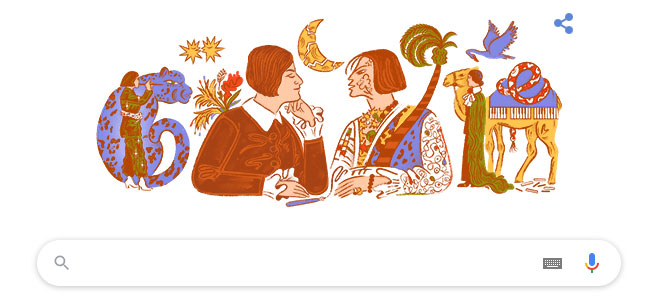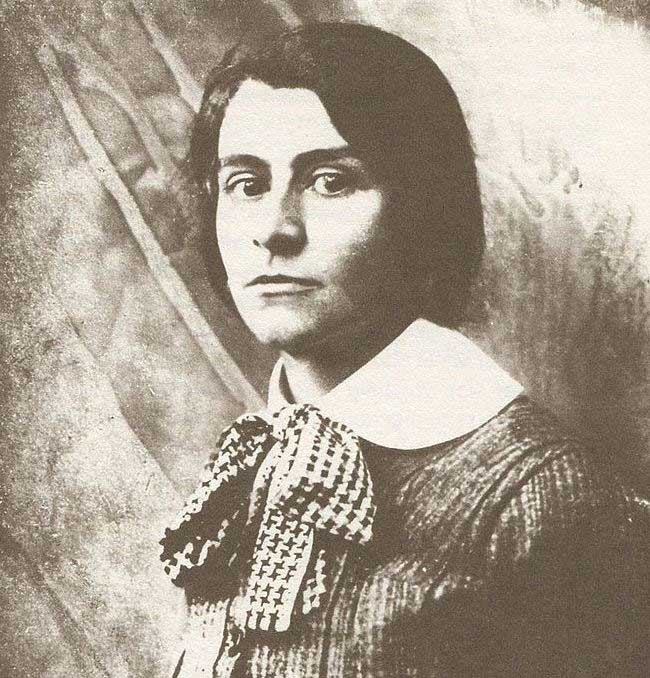Google honors Else LaskeSchüler: Great German lyricist
Today, February 7, 2020, Google replaced the Doodle image designed by Cynthia Kittler to commemorate the famous public poetry of the German poet, playwright and artist Else Lasker. -Schüler. So who is Else Lasker-Schüler, what contributions do you have for Germany and the world literature treasure in general?

The Doodle on the homepage of February 7 commemorates Else Lasker-Schüler's lyrical poem 'Mein blaues Klavier' published in Switzerland on this day in 1937. (Source: Google Doodle).
Else Lasker-Schüler: One of the greatest German writers of the 20th century
Right on this day in 1937, a Swiss newspaper published her famous poem called 'Mein blaues Klavier' - ('My Blue Piano'). The piano key image is beautifully designed by the artist of Google on the camel's back with images of the life and other work of the poet Else Lasker-Schüler.
Else Lasker-Schüler was born in the western town of Elberfeld on February 11, 1869. She was raised in a famous Jewish family. Having been taught by her mother, from an early age, she was encouraged to experiment and explore her artistic interests, and over time, she began to develop her talent as a poet.

Else Lasker-Schüler while in Berlin in 1907 when she released "The Nights of Tino of Baghdad".(Source: Rixdorf Editions).
In 1894, Else Lasker-Schüler married Jonathan Lasker and moved to Berlin (German capital), where she published the first poems in the country.
Gradually, she became a famous figure in the Berlin art world, having the opportunity to interact with some of the city's leading literary figures.
Tears from the war and two broken marriages
After the first marriage broke down in 1903, Else Lasker-Schüler married Georg Lewin - writer of Der Sturm magazine, where she collaborated with the pen name Herwarth Walden. The second marriage quickly ended in 1911.
Her first book of poems entitled "Styx" was published in 1902. Not only did she write poetry, she also wrote plays, typically the work "Die Wupper" (1909); autobiographical novel "Mein Herz" ( 1912); collection of short stories "Der Prinz von Theben" (1914) .
During the Second World War (1939-1945), Else Lasker-Schüler was forced to flee his homeland under Nazi hunt. In 1933, Else Lasker-Schüler emigrated to Switzerland after the Nazis came to power in Germany. By 1940, she settled in Jerusalem.
The chaotic war, the hard life and exile, poverty did not kill her love for poetry. She continued to write and publish her very famous poem, which was widely accepted by the public, including the poem 'Mein blaues Klavier' (My sad piano key), which was received by a Swiss newspaper. was published in 1937.
Coming to the poems of Else Lasker-Schüler, the reader is immersed in a new world with romantic images, with a strong desire to recall childhood and parents with a bit of nostalgia and loneliness.The two early marriages broke down, living away from her homeland because of war made her world not only nostalgic but also far from reality. Perhaps only in poetry did she find a little consolation for herself .
Thanks to her German work, which was known to the public in Germany, she was honored to receive the Kleist Award in 1932, considered to be the highest literary title of Germany at the time.
German poet Gottfried Benn (1886 - 1956) praised the female poet Else Lasker-Schüler as Germany's greatest lyrical poet!
Jerusalem is the city witnessed the last days of the great poet Else Lasker-Schüler. She died on January 22, 1945 in Jerusalem.
- Google honors Ignacio Anaya García - 'Father' of Mexican nachos makes diners fall in love
- Hoi An charm appears on Google Doodle July 16: What is the reason Google honors?
- Victor Hugo and famous works are celebrated by Google
- Google 8/2 honors Friedlieb Ferdinand Runge: He studied with great merits but endured his life
- Nkosi Johnson - Who is the boy honored by Google on February 4, 2020?
- Google threatened to cancel Gmail service
- Great Dane dog, giant with pigeon heart
- Who is Molière who Google Doodle honored?
- What is special about pretzel in Europe and America?
- Google Knol lags far behind Wikipedia
- Google honors Olga Ladyzhenskaya: Mathematicians overcome 'fate's pain' when they were young
- Who is Cesária Évora who was honored by Google Doodle today?
 Biography of hero Vu A Dinh
Biography of hero Vu A Dinh History of hematology
History of hematology Who is Mr. Tam Da 'Phuc-Loc-Tho' and what does it mean?
Who is Mr. Tam Da 'Phuc-Loc-Tho' and what does it mean? Unbelievable facts about the history of the oil and gas industry: Gasoline used to be cheaper than water, so abundant that it had to be dumped into the river...
Unbelievable facts about the history of the oil and gas industry: Gasoline used to be cheaper than water, so abundant that it had to be dumped into the river...